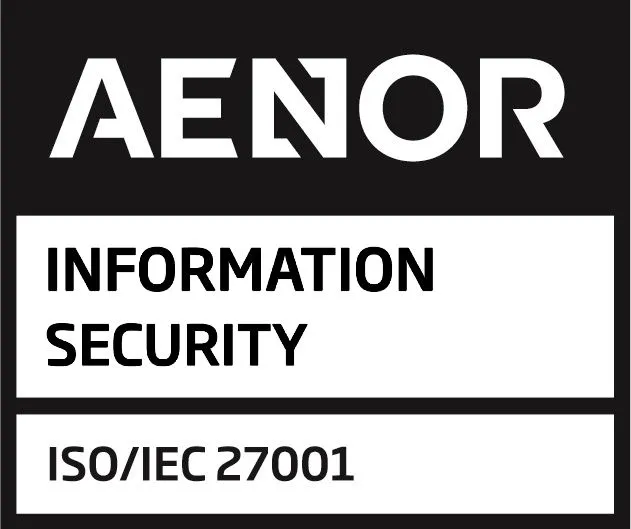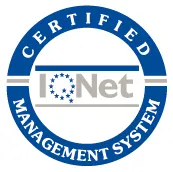
Employee burnout, also known as work-related stress, has become one of the leading concerns for companies and organisations today. Recognised by the World Health Organisation (WHO) as an occupational phenomenon, this work-related illness affects not only the mental and physical health of employees, but also the productivity and results of companies.
This article is an in-depth exploration of employee burnout. We will look at its causes, consequences and, above all, how to prevent it in your organisation, in order to promote employee wellbeing and ensure company success.
Table of Contents
What is employee burnout?
Burnout is a state of physical, emotional and mental exhaustion caused by prolonged stress at work. Employees who suffer from it often feel demotivated, overloaded and disconnected from their job responsibilities.
Symptoms of Burnout
- Extreme fatigue: Feeling of constant physical and mental exhaustion.
- Lack of motivation: Loss of interest in work tasks.
- Reduced performance: Difficulty in concentrating and performing tasks effectively.
- Irritability: Mood swings and interpersonal conflicts at work.
- Health problems: Headaches, insomnia and digestive disorders.
Key figures on burnout
- A 2018 Deloitte survey found that 77% of professionals have experienced burnout in their current jobs.
- According to a study conducted by the International Stress Management Association, 60% of employees worldwide have experienced burnout at some point in their careers.
- A 2020 Gallup survey reported that 76% of employees experience burnout on the job at least sometimes. Also, burned-out employees are 63% more likely to take a sick day and 2.6 times as likely to be actively seeking a different job.
- According to IPSOS, Excessive workload and poor management styles are significant contributors to workplace stress and burnout.
Prevention starts with action. Take the first step today to protect your team from burnout.
Main causes of employee burnout
Employee burnout does not come out of nowhere; it is usually the result of several work-related factors ans several HR problems. The main causes usually include:
- Unrealistic workload: Placing excessive demands on employees without providing adequate resources.
- Perceived lack of control: A feeling of not having the autonomy to make decisions.
- Toxic work environment: Poor interpersonal relationships or ineffective leadership.
- Lack of reward or recognition: Not feeling valued or rewarded for the efforts they make.
- Poor work-life balance: Long working hours that limit free time outside of work.
Impact of burnout in the workplace
Work-related stress does not only affect the individual worker concerned, but it also has serious consequences for companies:
- Low productivity: Employees suffering from burnout tend to work more slowly and make more mistakes.
- Increased absenteeism: Stress-related sick leave becomes prevalent.
- High staff turnover: Unhappy employees seek better opportunities elsewhere.
- Damage to reputation: A poor work environment can damage the employer brand.
How to detect and deal with employee burnout
Burnout does not appear from one day to the next. It is a silent process that accumulates little by little: demotivation, persistent fatigue, emotional disconnection, cynicism… Detecting it in time is key to being able to act before burnout affects the mental health of employees and the performance of teams.
That is why one of the most powerful tools that organisations have to prevent burnout is something as simple – and at the same time as profound – as listening. Active, continuous and structured listening through surveys and indicators that allow us to take the real pulse of the team.
Vip Connect, our all-in-one internal communication platform, brings different tools that help companies to detect trends and act in time:
- Work climate surveys: they help to identify patterns of dissatisfaction, demotivation or overload before they become major problems. It is also a means of measuring engagement and happiness at work.
- Specific burnout indicators: such as wellbeing thermometers or questionnaires focused on fatigue, stress and emotional balance, allow early warning signs to be detected.
- eNPS (Employee Net Promoter Score): this metric allows us to understand the level of commitment of teams and detect whether the emotional connection with the organisation is weakening.
- Communication mailboxes with HR (also anonymous): having a direct and confidential channel allows employees to express concerns or discomfort without fear, helping to detect cases of burnout that do not always surface in formal surveys.
What if burnout is already here? How companies should act
Prevention is ideal, but it is also key to know how to act when burnout is already present in the team. Ignoring the signs or minimising the problem only aggravates the situation: low productivity, higher turnover, increased absenteeism and, above all, a serious deterioration in people’s emotional well-being.
Managing burnout requires organisational courage and a real commitment to mental health. It is not enough to offer fruit in the office or a meditation subscription. It requires a structured strategy, with actions that address the real causes of burnout.
Here are some actions to address burnout in the organisation
- Talking about it, without taboos: Normalising dialogue about mental health helps people not to hide their discomfort. Leaders should be the first to open up this space.
- Making times and workloads more flexible: Reviewing objectives, redistributing tasks and offering breaks or rest days can be fundamental to cut the spiral of burnout.
- Professional support: Facilitating access to psychological support or individual coaching can make a big difference in the employee’s recovery.
- Train leaders in emotional management: Managers must be prepared to detect signs of burnout and act empathetically and quickly.
- Review processes and culture: Often, burnout is not a problem of the employee, but of the environment. Rethinking the culture of ‘always being available’ or excessive meetings is also part of the solution.
Create spaces for your team to talk. Communication mailboxes can be your best tool against burnout.
Success stories: Companies fighting burnout
Some organisations have introduced innovative measures to combat employee burnout and improve employee job satisfaction:
- Google: Offers mindfulness workshops and specially designed relaxation spaces within its offices.
- Salesforce: Has implemented a 4-day work week to encourage rest and productivity.
- Vip District: Provides exclusive benefits through its smart engagement platform, including access to discounts and services designed to reduce financial and emotional stress.
Employee burnout prevention strategies
Preventing burnout requires a comprehensive strategy that combines individual and organisational actions. Here are some key recommendations.
Recognition against burnout at work
Burnout does not always come from an excessive workload. Often, it stems from a quieter but equally dangerous feeling: feeling that effort does not matter. When people don’t feel valued, their motivation drops, commitment wanes, and emotional exhaustion sets in.
A joint study by Gallup and Workhuman (2024) found that 57% of employees who receive frequent feedback from co-workers are less likely to experience burnout.
Although feedback often comes from team leaders, the reality is that recognition occurs more frequently among peers. Encouraging appreciation to flow in a natural and personalised way not only strengthens the bond between colleagues, but also reduces cumulative stress levels.
Moreover, it is not just about recognising great achievements. A big opportunity for companies lies in broadening the reasons why a person is valued. Only 37% of employees say that non-performance-related aspects such as attitude, empathy or emotional support are recognised in their company. And that can be a mistake. When these human qualities are also recognised, employees are 67% more likely to be engaged and 74% more likely to feel connected to the organisation’s culture.
Authentic, consistent and well-directed recognition can act as an emotional barrier to burnout. People not only want to be evaluated on their performance, but also to feel seen for what they contribute as individuals. And that starts with building a culture where giving feedback is not just a task for managers, but a practice shared by all.
Recognition is not an extra, it is a must. Create your recognition programme and start fighting burnout at the root.
How do you incorporate recognition into your day-to-day work?
One way to make recognition not a one-off, but a living part of the company culture, is to adopt structured recognition programmes as a pillar of HR. Integrating them into the employee experience helps appreciation flow naturally across all departments. This not only avoids burnout: it builds more committed teams, stronger relationships and a work culture where each person feels that their effort is worthwhile.
At Vip District, we help hundreds of companies to incorporate recognition as a preventive measure against burnout. We tell you how:
- With Vip Incentives you can set up a personalised recognition and incentive programme for your company. You can run campaigns with challenges, with the possibility of segmenting by department or location and following different criteria. For each completed challenge, employees receive points that they exchange for prizes from a wide catalogue. In addition to recognising business-related milestones, many of our clients create specific campaigns to recognise personal milestones such as work anniversaries, birth of a child, marriage, graduation, among others. Find out more about Vip Incentives.
- Vip Award is the peer-to-peer recognition platform, or coworker feedback platform. A real wall of praise where employees can dedicate a few positive words to colleagues from any department. Each company can define the criteria by which feedback is given, and thus align with corporate values. The platform also features AI moderation to ensure that everything follows the guidelines of respectful language defined by the company. With a ranking, HR can identify the most valued employees among their peers and attitudes. Find out more about Vip Awards.
Other actions to prevent burnout
Although recognition plays an important role in burnout prevention, there are many things companies can do to join forces and really armour themselves against absenteeism. Here are a few more ideas:
1. Promote a culture of wellbeing
- Foster a positive work environment where employees feel valued and supported.
- Implement mental health and emotional wellbeing programmes, such as access to therapists or mindfulness sessions.
2. Review workloads
- Assess each employee’s responsibilities and make sure that workloads are appropriate.
- Provide tools and resources that help employees in their tasks.
3. Provide flexible working arrangements
- Implement flexible working hours or remote working so that employees can achieve a healthy work/life balance.
- Make taking time off for personal needs easy, normal and free of negative repercussions.
4. Train leaders
- Educate managers in empathetic leadership and stress management so they can identify and address early signs of burnout.
- Encourage recognition and positive feedback.
5. Encourage regular breaks
- Create spaces for active breaks during the working day.
- Encourage employees to take their allocated holiday days and truly disconnect from work.
Prioritise wellbeing to avoid burnout
Burnout is a modern reality which cannot be ignored. Its impact is profound for both employees and companies. Preventing it requires commitment, concrete actions and a focus on wellbeing. By implementing carefully designed measures to reduce burnout, not only will employees’ quality of life improve, but it will also strengthen organisational culture and increase company productivity.
Prevention starts with action. Take the first step today to protect your team from burnout.









